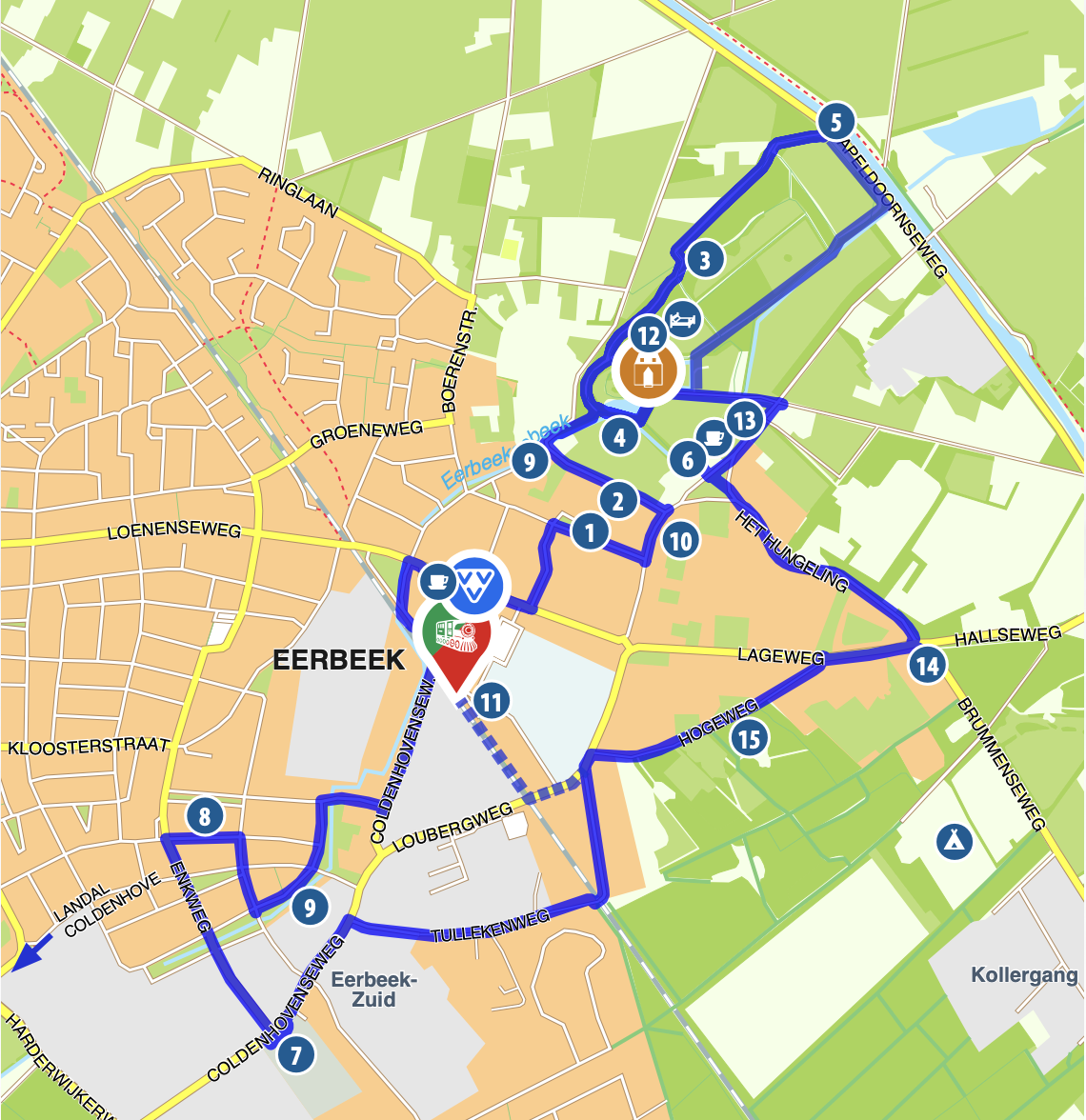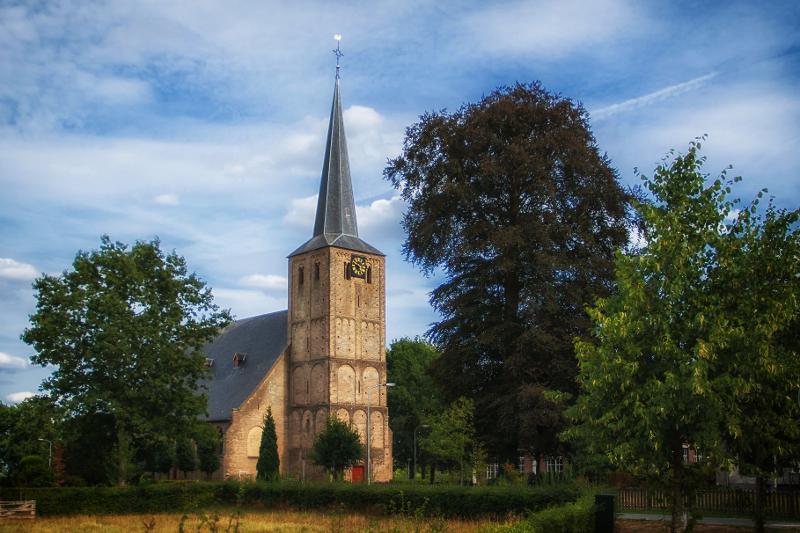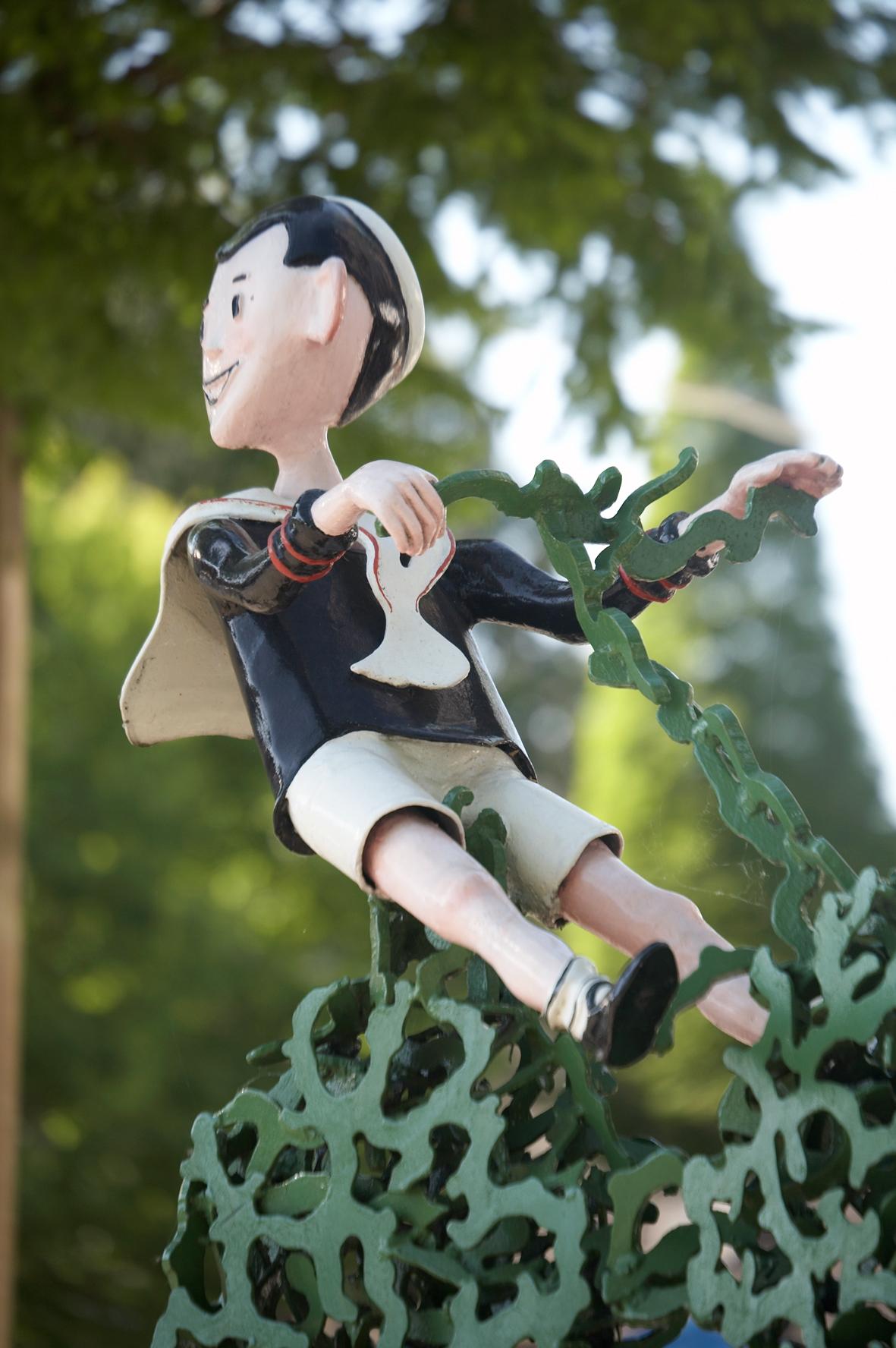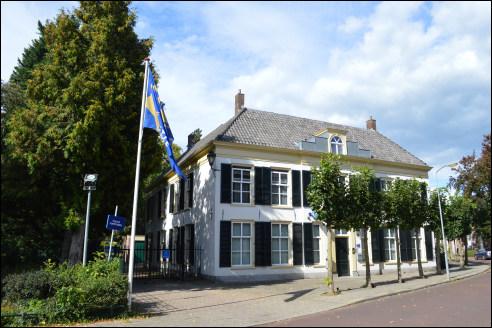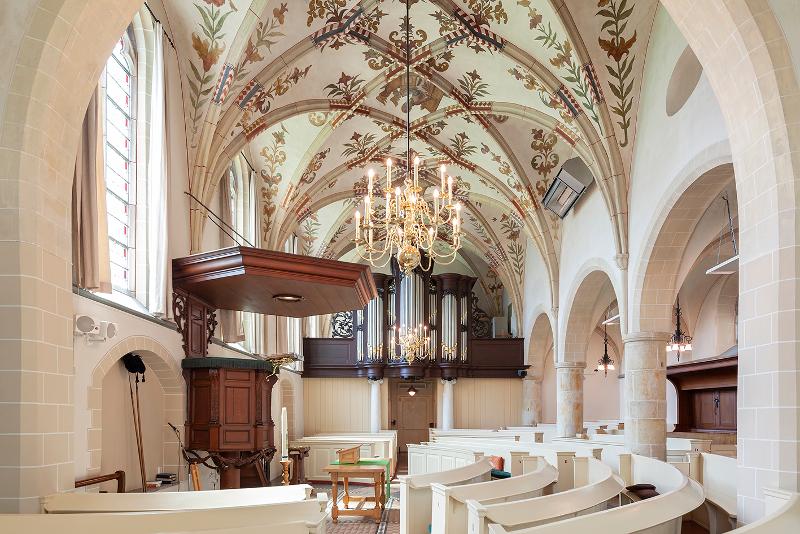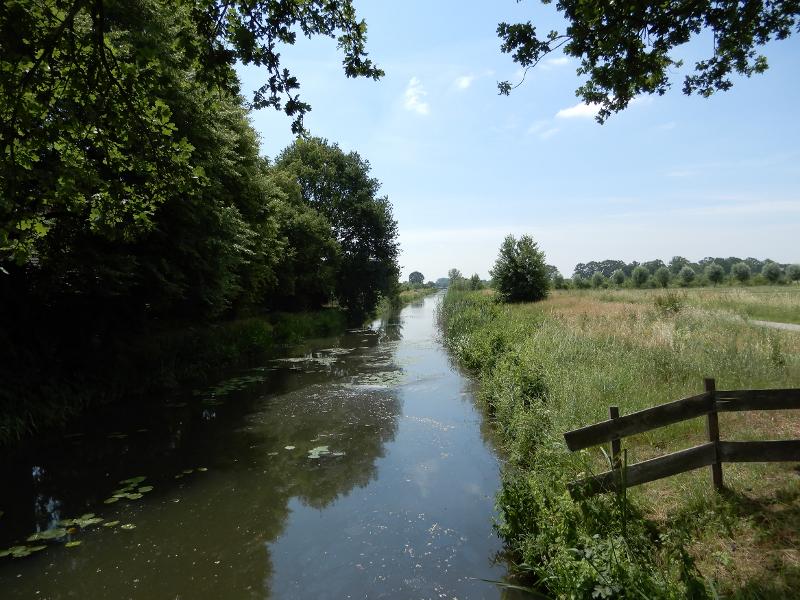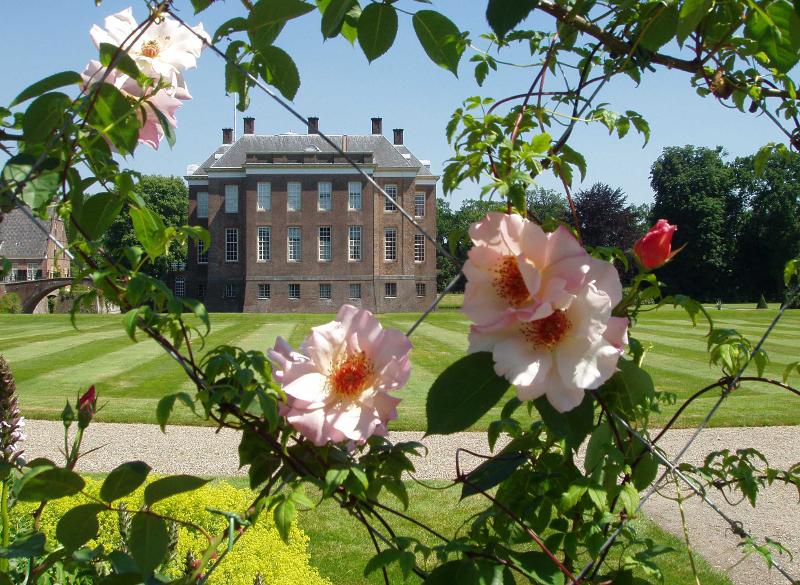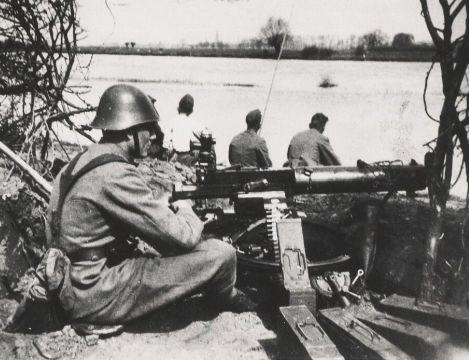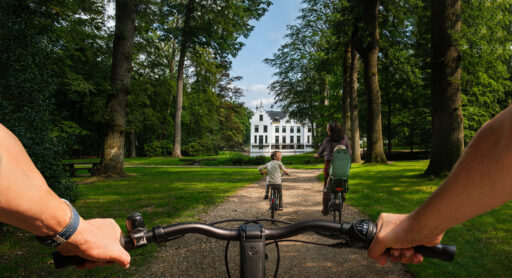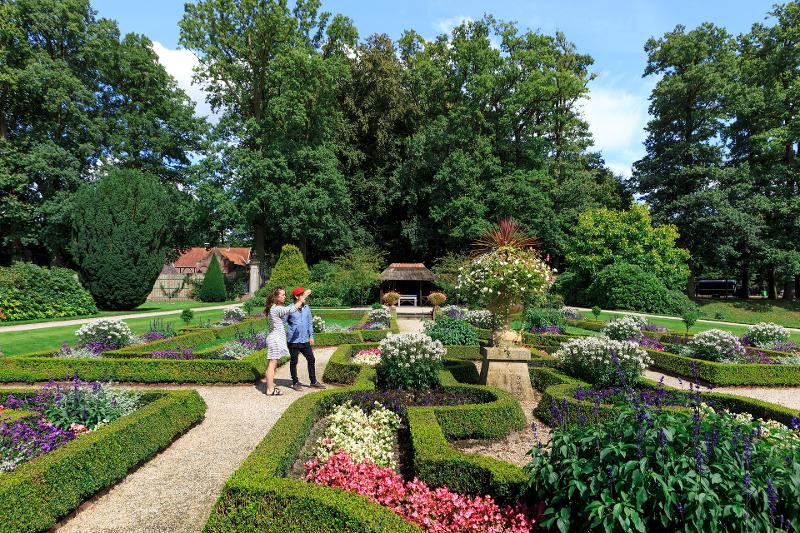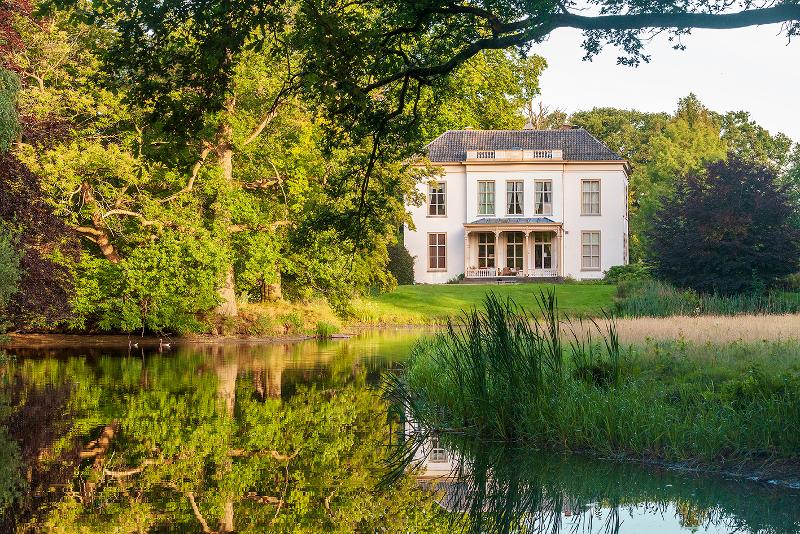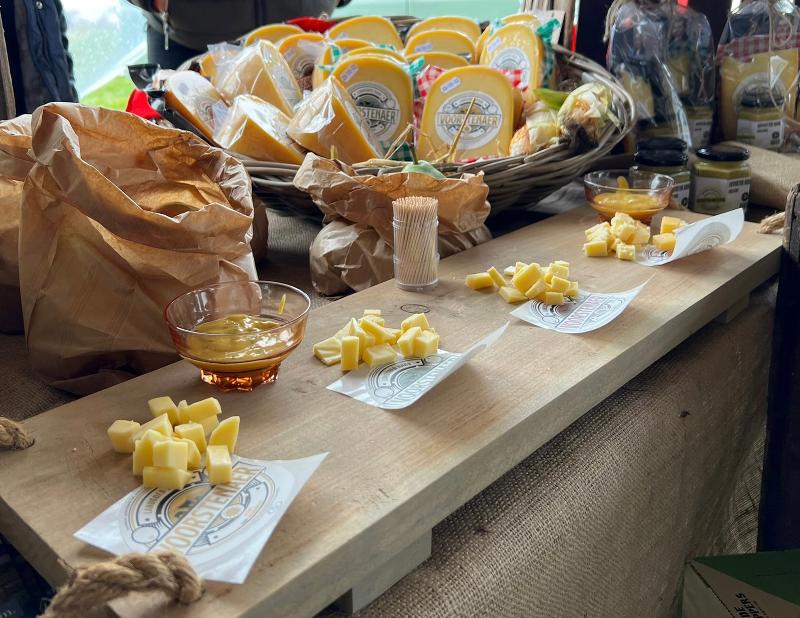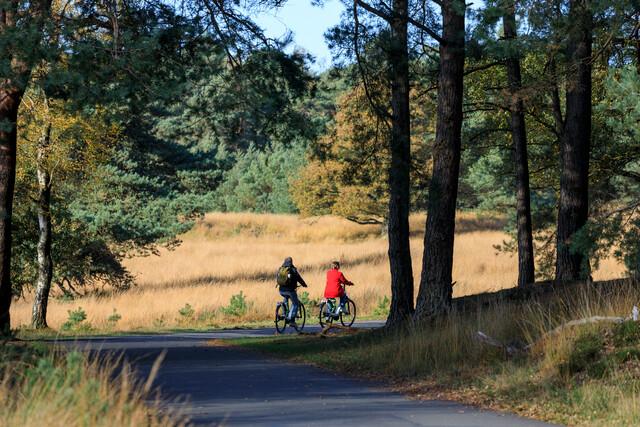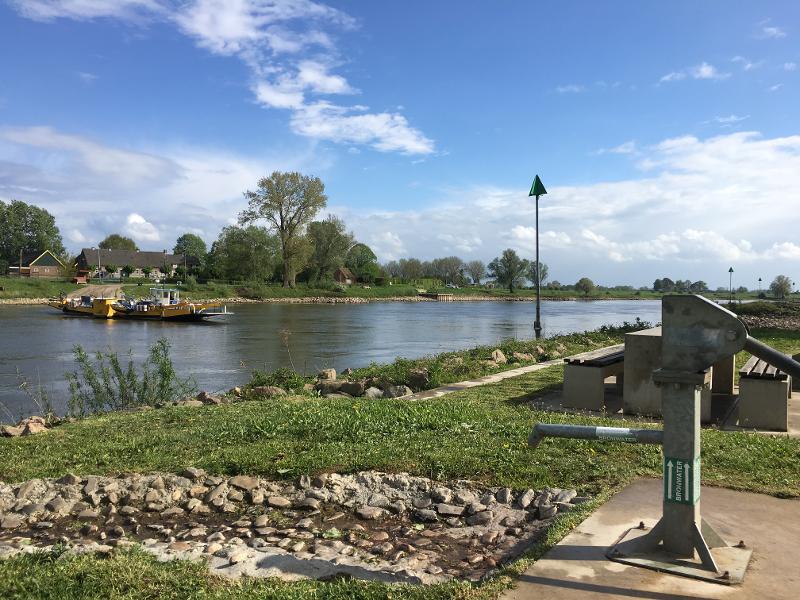Famous in Eerbeek in 1920. The walking route takes you past locations that played a role in their lives.
Jan Mankes 1889 – 1920
A painter of tranquil works in Eerbeek
Jan Mankes is a painter, appointed during his lifetime. Jan Mankes lived in Eerbeek from 1916 to 1920. He sought out the wooded area and the clean air because he was suffering from tuberculosis. Jan Mankes is known as a painter of tranquil paintings. the tranquility in his work is evoked by balanced compositions and subdued use of color, and a barely visible brushstroke. A large number of works by Jan Mankes have been housed in Museum MORE in Gorssel since 2015.
The locations related to Jan Mankes are numbered on the image with the route:
1. Derickxkamp 2: Image inspired by Young white goat by Jan Mankes. In 1992, artist Marijke Ladage was commissioned by the municipality of Brummen to create a sculpture based on the painting Young white goat (1914) by Jan Mankes. A passage from a poem about Jan Mankes by Willem de Mérode has been placed on the pedestal.
2. Dr. Gunningstraat 13: Home of father Jan, mother Annie and son Beint Mankes between 1916 and 1920. ‘In the garden you see a spider in its web and you make a woodcut of it. You see a woman reading by lamplight and you think of a painting. For variety, you walk behind a team and draw near the house…’. Letter quote from Jan Mankes, September 1916. Jan Mankes had his studio in the conservatory. The painter found a lot of inspiration in a small circle around his house. Animals such as white mice, a hedgehog, chickens, horses. And views such as Huis te Eerbeek, the farm on Molenstraat, an orchard. Jan Mankes could live from the proceeds from his paintings and prints during his lifetime.
3. Weberbos: From his house Jan Mankes looked out over the Huis te Eerbeek estate. ‘It’s a wonderful life outside. Eerbeek is beautiful and surprisingly quiet. You should definitely come and have a look. I believe that I will be able to find what I need for my work here.’ Letter quote from Jan Mankes, September 1916.
4. Pond Huis in Eerbeek: Fish that Jan Mankes had painted were released into the pond of Huis te Eerbeek after the painting was completed.
5. Apeldoorns Canal: The Apeldoorns Canal was an important waterway between the IJsselmeer near Hattem and the IJssel near Dieren. Ships sailed when the wind was favorable, or were pulled by man or horse along the towpath along the canal. Seen from Eerbeek, the towpath is on the other side. It is now a beautiful cycle path. Jan Mankes made studies of horses. For this purpose he gave the barge drivers cigars in exchange for being allowed to draw the horses while they were waiting for the peat to be unloaded and the material from the paper factory to be loaded.
6. Flour mill: Where in Holland the mills were driven by wind, the mills in the Veluwe were driven by running water. In 1750, the Veluwe had almost 200 paper mills, because the water of the Veluwe was flowing and clean. In the time of Jan Mankes, around 1900, the mill ground wheat. The water wheel set and sets the millstones in motion. The flour mill still works! Demonstrations are every Saturday from 11am to 5pm from April to October. Jan Mankes painted and drew the miller’s white horse.
7. Eerbeek Cemetery: Jan Mankes and Annie Mankes-Zernike, Weber, are buried here, according to Max Weber and Anna Weber-van Bosse and Willem de Mérode. The Mankes grave was designed with special letters by friend Chris Lebeau.
8. Jan Mankesstraat: Amsterdam, The Hague, Nunspeet and of course Eerbeek have a Jan Mankesstraat. In Eerbeek there are workers’ houses built in 1950 for the workers of the paper factories. Now we think that small houses. The ground floor covers 5.5 x 6.5 meters, a total of 36m2. Eerbeek is still the center of the European paper industry and many residents have work in this innovative sector.
9. Eerbeekse Beek: In the 17th century, several streams were constructed from the Veluwe. The flowing water from the stream powered water mills, watered the canals and fountains at castles and country estates and later filled the Apeldoorn Canal. The origin is a spreng, a hole dug in the slope of a hill with sufficient water pressure. With the streams and springs, Eerbeek and the surrounding area has a unique water system in Europe.
10. Molenstraat 2: The farm is depicted in a drawing and painting of a snow landscape.
Max Weber 1852 – 1937
World zoology expeditions from Eerbeek
In 1883, Max Weber became an extraordinary professor at the University of Amsterdam in comparative anaesthesia and zootomy, animal anatomy. During his famous Siboga expedition in the Indian Waters, he collected a lot of research material for dozens of biologists. under his authority they discovered 131 new species of fish. Before that, he already made expeditions to Northern Norway, Tromsø, to investigate whales.
The locations associated with Max Weber are numbered on the image with the route:
11. Coldenhovenseweg 13: Montessori school, founded in 1921, now the Eerbeek Library. ‘Help me do it myself’ is the core of Montessori education. The basic principle is that a child has a natural urge to develop himself. A Montessori teacher recognizes the child’s learning moment and then offers learning materials. As in Amsterdam, Anna Weber-van Bosse showed great social commitment in Eerbeek. She was a board member of the Red Cross and helped establish a Montessori school in Eerbeek. Professionally, she maintained international contacts with all the important botanists of her time. And as a woman, she oversaw the household and management of the estate.
12. House in Eerbeek: In 1895, Prof. Dr. Max Weber and his wife Dr. Anna Weber-van Bosse bought the Huis te Eerbeek estate. This gave Eerbeek one of the most important zoologists and a renowned algologist as residents. Scientists from all over the world visited the estate. Several professors decided to be close to Max Weber and, like the Webers, moved to Eerbeek. The mansion was an exotic place by the Webers. Research material from all over the world was examined in the laboratory in the big house. Max Weber also took trees and exotic crops and gave them a new place on the estate. Tropical plants were given a place in the conservatory. The cassowary, a large ostrich-like flightless bird, made its daily rounds through the garden and lived together with the monkey and the civet cat.
13. Barn at Korenmolen: Professor Weber was one of the founders of the honey and bee market of Eerbeek. The beekeepers’ association continues to flourish today and the bee is widely honored for its function in pollinating crops. The Eerbeek Honey and Bee Market takes place every year on the fourth Saturday in September. Here masters inspect the new harvest of heather honey. Come see.
14. Lageweg 42: Professor’s home, villa ‘t Hungeling, ca. 1900. This villa was built by the biologist Prof. Sluyter, a friend of Professor Weber. What is striking about the white-plastered house is the thatched roof and the wide overhangs.
15. Hogeweg 14: Professor’s home at the Zesschepelhoek villa, before 1923. A biology professor, Professor Mol, also lived in this villa at the beginning of the 20th century.
Jan Mankes and Max Weber knew each other well. For example, Weber bought prints by Mankes. And so Mankes started a portrait of Weber, which unfortunately he did not finish.
- Category:
- Wandelroute

